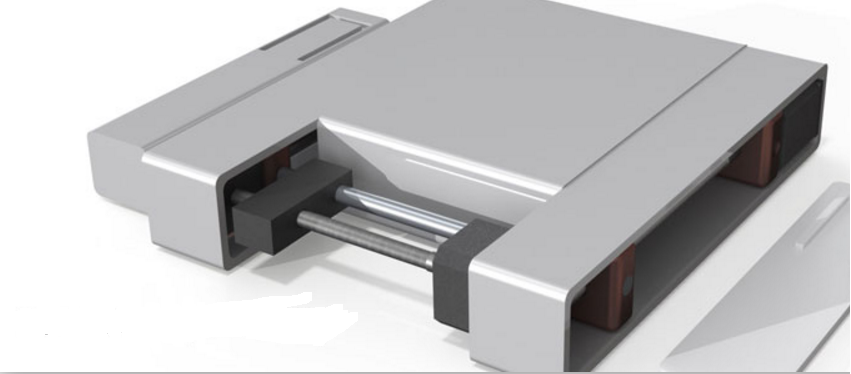Just as the spectacular city-state of Singapore is a leader in Asia on so many fronts, so are numerous up and coming organizations and companies, within its realm, regarding 3D printing and complex research and development. As bioprinting looms brightly lit on the horizon, it seems that Singapore looks to take on the challenge as well, along with their counterparts across the world already involved in intense studies.
Nanyang Technological University and their Singapore Centre for 3D Printing are already well on their way to global recognition in their efforts to promote comprehensive research and development within the technology, along with numerous innovations that have emerged in their encouragement of the student population heavily engaged in exploring the high-tech world.
 So far, we’ve seen SC3DP promoting projects and challenges that have brought out the brilliance in their students, giving them direction in concept but allowing them plenty of latitude to bring unique new innovations to the world which can be built on and expanded.
So far, we’ve seen SC3DP promoting projects and challenges that have brought out the brilliance in their students, giving them direction in concept but allowing them plenty of latitude to bring unique new innovations to the world which can be built on and expanded.
Nanyang and SC3DP have highlighted winners with 3D printed creations like complex apparel bordering on the 4D platform, toys fabricated with high tech but demonstrating an old-world feel, and more. Within their centre, however, they have far more serious goals regarding the future, with $150 million in funding currently, and aspirations to work within aerospace, construction, marine, and manufacturing as a whole. Now, they too are speaking out on bioprinting, and Mike Goh, senior assistant director at SC3DP, gives his thoughts on the technology, seeing it as an integral part 3D printing’s progression, recognizing that the hardware used is similar, while the materials sought after must be adjusted as they are biological in nature.
“Singapore’s 3D printing capabilities are comparable to the developed countries, as our government has been investing heavily in this area,” said Goh. “SC3DP has one of the best-equipped labs in the world [for 3D printing] and has been attracting leading researchers to the centre… We can make Singapore a leading centre for 3D printing in the world.”
 Obviously, the potential for R&D in this area of bioprinting is enormous, and can offer huge impacts to the world. Due to the resources in Singapore, Goh sees it as no stretch whatsoever for their researchers to begin delving into the area significantly.
Obviously, the potential for R&D in this area of bioprinting is enormous, and can offer huge impacts to the world. Due to the resources in Singapore, Goh sees it as no stretch whatsoever for their researchers to begin delving into the area significantly.
Under Proctor & Gamble’s collaboration with Singapore’s public R&D agency, A*STAR, the two organizations have even conducted a joint grant call on 3D printing, which will be drawn from an overall collaborative fund of S$60m.
And while organ transplants are certainly eventually the much talked about future goal of bioprinting, those with their feet firmly planted on the ground and knowledgeable about the subject are well aware that bioprinting is just beginning to evolve, still just taking baby steps as cellular structures are being 3D printed and explored.
Companies like Bio3D Technologies of Singapore, founded several years ago, also have growing experience under their belts when it comes to the subject, as manufacturers of bioprinting hardware that has evolved rapidly.
We began following Bio3D with the inception of their first bioprinting 3D printer, Life Printer X–capable of printing with biological material as well as non-biological material–and this past summer they just released the Bio3D Explorer, an entry level 3D printer meant to offer affordability and accessibility to researchers, educators, and students just waiting to explore the realm of bioprinting.
While they believe Singapore can definitely be a major player in bioprinting, the team at Bio3D is putting the emphasis on studying the subject in-depth first–and putting the tools out there for those with the existing skill sets as well as the younger generations with a growing enthusiasm for science and technology.
“Bioprinting in Singapore and Southeast Asia is still lagging behind the West, especially the US,” said Mingwei Fan, the director and one of the co-founders of Bio3D Technologies. “Researchers and scientists in the US and Europe understand the technologies better and are more keen to explore bioprinting than their counterparts in Asia. In Singapore the challenge is increasing the awareness and understanding of 3D printing and bioprinting.”
Often mentioned with bioprinting also is the potential transformations that can be offered to pharmaceuticals, as the effects of myriad medicines can be tested on cellular structures we will create in labs. The bonus in that is that it would also help to begin the elimination of animal testing, as well as some of the studies performed on human subjects, albeit willing, too. This could help reduce side effects, and increase efficiency in development effectiveness in the use of specific medications.
“Many people think of bioprinting as ‘organ printing’. However, the possibility of using a bioprinted organ in a human is still quite distant,” said Fan. “I believe that bioprinting will instead benefit the research industry first.”
While the 3D printing of pills has already been well-established as a current and definite , in combination with the creation of and testing on 3D printed cellular structures, true and positive changes can be made overall for patients who will be able to receive much more customized treatments–and once again, reaping all the benefits of 3D printing through greater quality, efficiency, customization, and very importantly–affordability.
While the bioprinting industry is still in its most initial phases, it offers a very positive future for medicine–and the human race as a whole. With Singapore on board in research and development, adding to what the US and Europe has already contributed, no matter who comes out ‘ahead,’ this research has the potential to change many processes in serious medical treatments as we know it. Let us know your thoughts on Singapore’s bioprinting ambitions in the 3D Bioprinting Singapore forum thread on 3DPB.com.
Subscribe to Our Email Newsletter
Stay up-to-date on all the latest news from the 3D printing industry and receive information and offers from third party vendors.
You May Also Like
3D Printing Unpeeled: Orbex Investment, IndoMIM and HP, Ultrasonic Waves
INDO-MIM has bought three HP Metal Jet S100 printers, operating two in India and one in Texas. This is a win for HP because the company has deep experience in...
Seurat CFO Di Paola Shares Insights on Defying Industry Trends in 3D Printing
In an industry where 3D printing public companies are grappling with troubled earnings and workforce reductions, Seurat is defying market trends by increasing its workforce sevenfold, growing from 20 to...
AMCM Debuts 8-Laser Metal 3D Printer for Prometheus Rocket and Forges Partnership with Sintavia
EOS sister company AMCM has unveiled its upcoming M 8K laser beam powder bed fusion (PBF-LB) metal AM machine. It is expected to launch by the end of 2024. Building...
Daring AM: ArianeGroup Advances Europe’s Reusable Rockets with Successful Testfire
Despite setbacks in the global space industry, such as Relativity Space’s recent failure to launch a 3D printed rocket and the closure of Virgin Orbit, European Ariane rockets are gained...


































